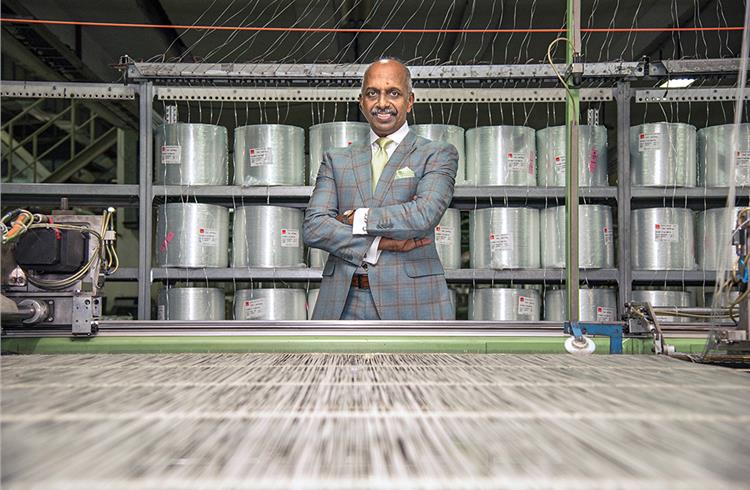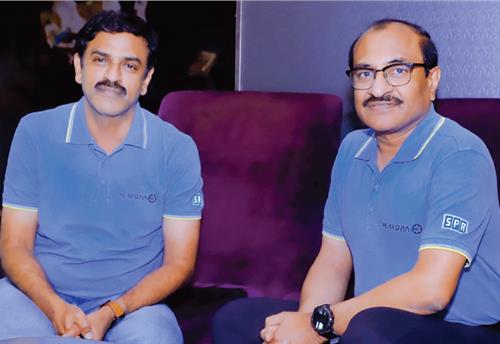Saertex sees EVs as driver for composites
All the insights on the latest strategies adopted by Saertex India, straight from Dr Bose.
The German supplier of fibre reinforced composites hasn't made much inroads into India's auto industry but a renewed focus on lightweighting gives it a new chance.
Mission Retro-Fitment – the Indian Railways' mammoth project of overhauling the interiors of some 40,000 coaches by 2022-23 – must have made composite industry professionals smile when the project was announced by the government last year. Among those who are glad with the government's decision is Dr PKC Bose, vice-chairman and managing director of Saertex India, the Indian subsidiary of Germany's Saertex. The reason is that a major part of the overhaul will see composites replacing other conventional materials in the coach interiors.
Dr Bose is hoping strongly that the Indian automotive industry would also adopt composites now more than ever before. The growing trend of electric mobility is fueling that hope. Lightweighting has been a focus area for the auto industry for quite some time. With the advent of electric mobility, the focus of lightweighting is growing stronger as electric vehicle (EV) makers and suppliers try to enhance efficiency by going as light as possible. Dr Bose says that composites make more sense than steel for EVs as being a lightweight material they help support the powertrain in stretching every watt out of the battery pack.
Cost is a key reason for the very low adoption of composites by the Indian auto industry. The cost premium in a bus with a composite body could be 30 percent compared to a metal-bodied one. In a price-sensitive market like India, that can be prohibitive.
"I can only say that the cost will be much lower when you take it on a gross evaluation, not on a net evaluation," says Dr Bose. He claims that the capex for a composite coachbuilding facility and manpower required in it is only 10 percent of a conventional setup. In a composite body building facility, there would be a mould instead of multiple machines. Every mould is good for 500 units of a composite body. "Plus, the weight-to-strength ratio of the material is almost six times more," says Dr Bose. For a 14-metre bus, he claims, the maximum payback period is three years.
Batting for new regulations
Citing the example of Indian Railways which has drafted new specifications for coach interiors, and the boat industry, Saertex India says that there should be standardisation for bus coaches in the electric mobility era. "The government should actually encourage offering the benefit to OEMs, saying that if you introduce electric buses with composite body, this is the extra benefit you get," says Dr Bose. Alternatively, bus OEMs offering composite coaches could collectively approach the government to get carbon credit. "Why not? That should be the new way to approach and making government aware about it," says Dr Bose.
Composites offer benefits such as weight reduction leading to lower emissions, lesser tyre wear, and better durability. Composite bodies are impregnated with colour which removes the need for painting. If such are the benefits, why haven’t the Indian automobile OEMs adopted mass scale composite techs? "Simple reason is, in India composite is considered as, the larger norms they call it as FRP (fibre reinforced plastic). In simple terms, it is called as fibre glass. Fibre glass is considered as a bucket-and-brush technology. Since there's no norm, anybody can build anything and give it to the automotive industry as composite and it fails and then industry gets a bad name in composite," says Dr Bose.
Industry-Academia collaboration
To create the right awareness, knowledge and image for composites in India, Dr Bose is in talks with a few IITs and private engineering institutions. A centre of excellence for material science could come up in one of the institutes.
In 2011, Saertex India came very close to launching India's first composite bus with Ashok Leyland. That bus didn't hit the roads as the OEM's priorities changed. Dr Bose is hopeful that OEMs like Ashok Leyland will look at composite buses more seriously now as the electric mobility era arrives.
(This article was originally published in 1 February 2018 issue of Autocar Professional)
RELATED ARTICLES
BRANDED CONTENT: Eliminating the worries of battery charging with smart solutions
The charging infrastructure is the backbone of electric mobility but is also one of the key perceived barriers to EV ado...
The battery-powered disruptor
Greenfuel Energy Solutions is planning to shake up the EV battery market with the launch of a portfolio of specially eng...
SPR Engenious drives diversification at Shriram Pistons & Rings
The engine component maker is now expanding its business with the manufacturing of motors and controllers through its wh...





 03 Apr 2018
03 Apr 2018
 6708 Views
6708 Views





 Autocar Pro News Desk
Autocar Pro News Desk




